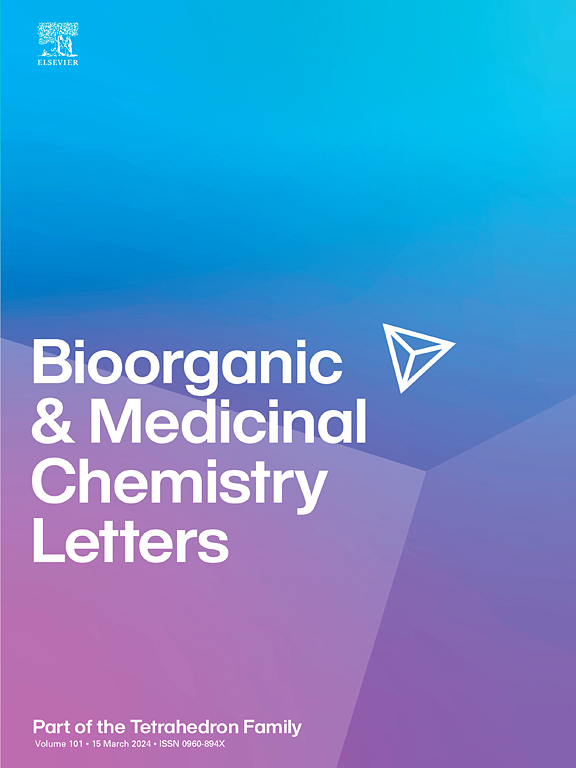苯并恶唑脲抑制VraS并增强抗万古霉素中耐药金黄色葡萄球菌的抗菌剂。
IF 2.5
4区 医学
Q3 CHEMISTRY, MEDICINAL
引用次数: 0
摘要
万古霉素中耐药金黄色葡萄球菌(VISA)是一种值得关注的病原体。VraS是一种组氨酸激酶,促进了VISA表型。在这里,我们揭示了一种苯并恶唑脲(化学物质1),它直接抑制VraS,并增强万古霉素,使其低于典型VISA菌株Mu50的临床断点。50 μM的1能使万古霉素增强16倍至0.25 μg/mL。莫西林的MIC提高了32倍,达到8 μg/mL,仅略高于其临床断点。该化学物质还显示出对奥西林对几种MRSA菌株的增强作用。1显示vra中ATPase活性抑制约30%,并降低万古霉素暴露时典型的vra基因自上调。因此,1抑制vra以阻断正常的vra操纵子功能,导致细胞壁导向抗生素的有效增强。有趣的是,分子模型方法表明1不会从活性位点取代ATP,而是在其他地方起作用。虽然VraS抑制剂先前有报道对MRSA起作用,但据我们所知,这是第一个报道的直接VraS抑制剂,显示万古霉素对VISA的显著增强。本文章由计算机程序翻译,如有差异,请以英文原文为准。

A benzoxazolyl urea inhibits VraS and enhances antimicrobials against vancomycin intermediate-resistant Staphylococcus aureus
Vancomycin intermediate-resistant Staphylococcus aureus (VISA) is a pathogen of concern. VraS, a histidine kinase, facilitates the VISA phenotype. Here, we reveal a benzoxazolyl urea (chemical 1) that directly inhibits VraS and enhances vancomycin to below the clinical breakpoint against an archetypal VISA strain, Mu50. 50 μM of 1 enhances vancomycin 16-fold to 0.25 μg/mL. The MIC of oxacillin is enhanced 32-fold to 8 μg/mL, only slightly above its clinical breakpoint. The chemical also showed promising enhancement of oxacillin against several MRSA strains. 1 shows ∼30 % inhibition of ATPase activity in VraS and reduces vra gene auto-upregulation typical upon vancomycin exposure. Therefore, 1 inhibits VraS to block normal vra operon function, leading to potent enhancement of cell wall-directed antibiotics. Interestingly, a molecular modeling approach suggests 1 does not displace ATP from the active site, but acts elsewhere. While VraS inhibitors have previously been reported to function against MRSA, to the best of our knowledge, this is the first direct VraS inhibitor ever reported that shows significant enhancement of vancomycin against VISA.
求助全文
通过发布文献求助,成功后即可免费获取论文全文。
去求助
来源期刊
CiteScore
5.70
自引率
3.70%
发文量
463
审稿时长
27 days
期刊介绍:
Bioorganic & Medicinal Chemistry Letters presents preliminary experimental or theoretical research results of outstanding significance and timeliness on all aspects of science at the interface of chemistry and biology and on major advances in drug design and development. The journal publishes articles in the form of communications reporting experimental or theoretical results of special interest, and strives to provide maximum dissemination to a large, international audience.

 求助内容:
求助内容: 应助结果提醒方式:
应助结果提醒方式:


